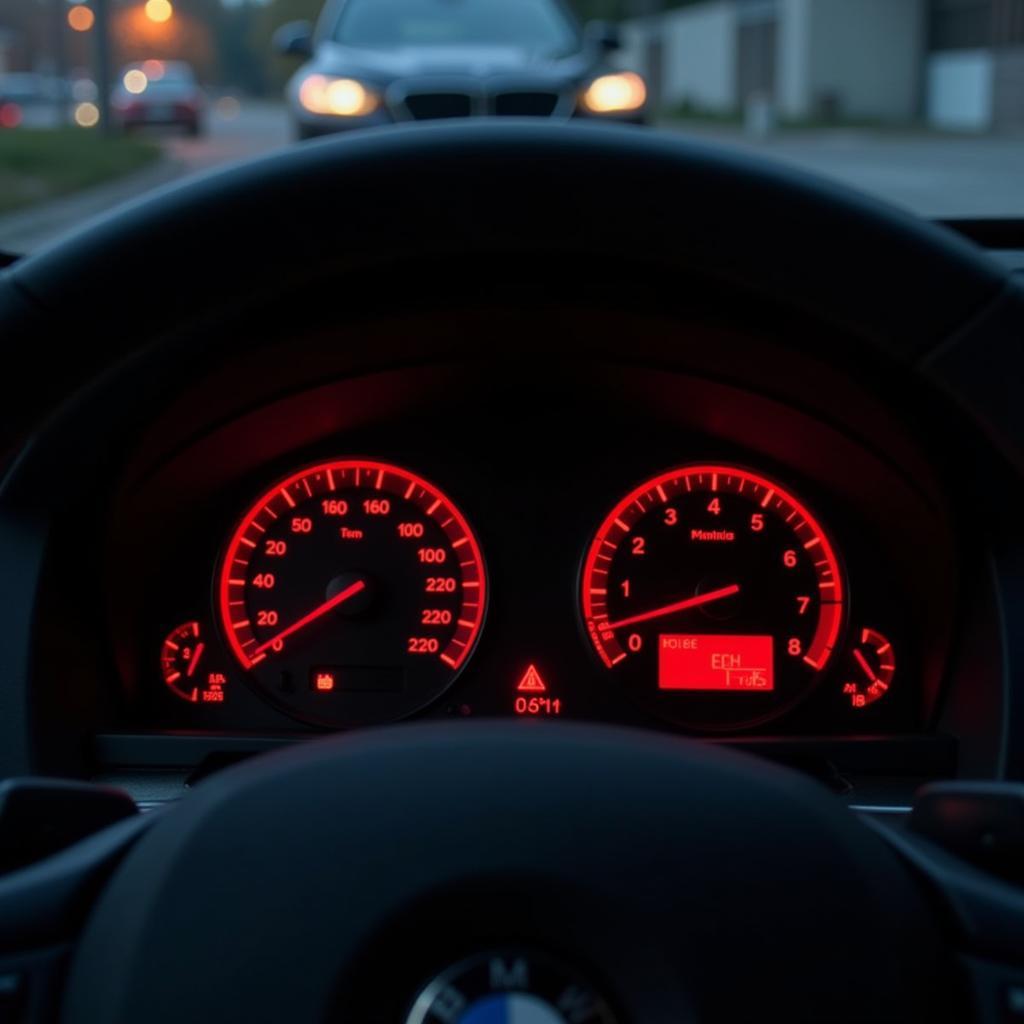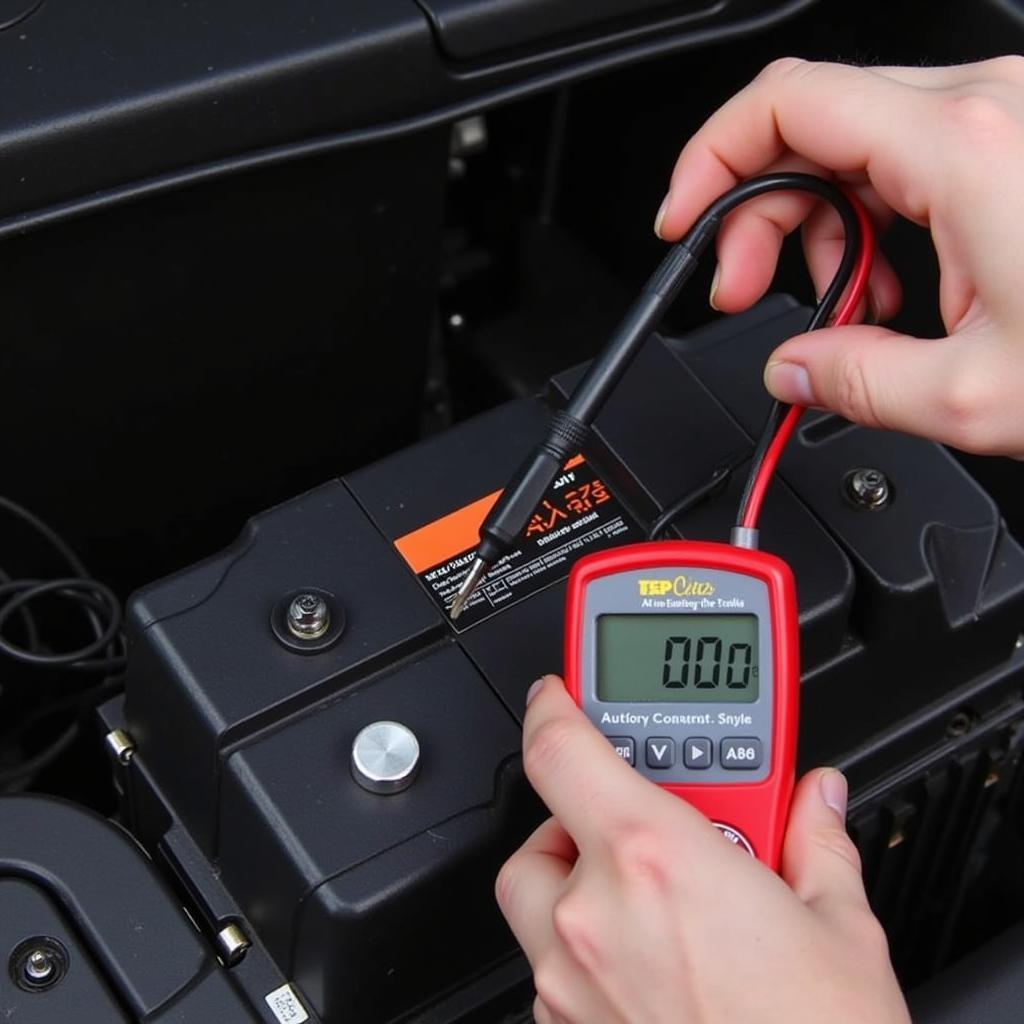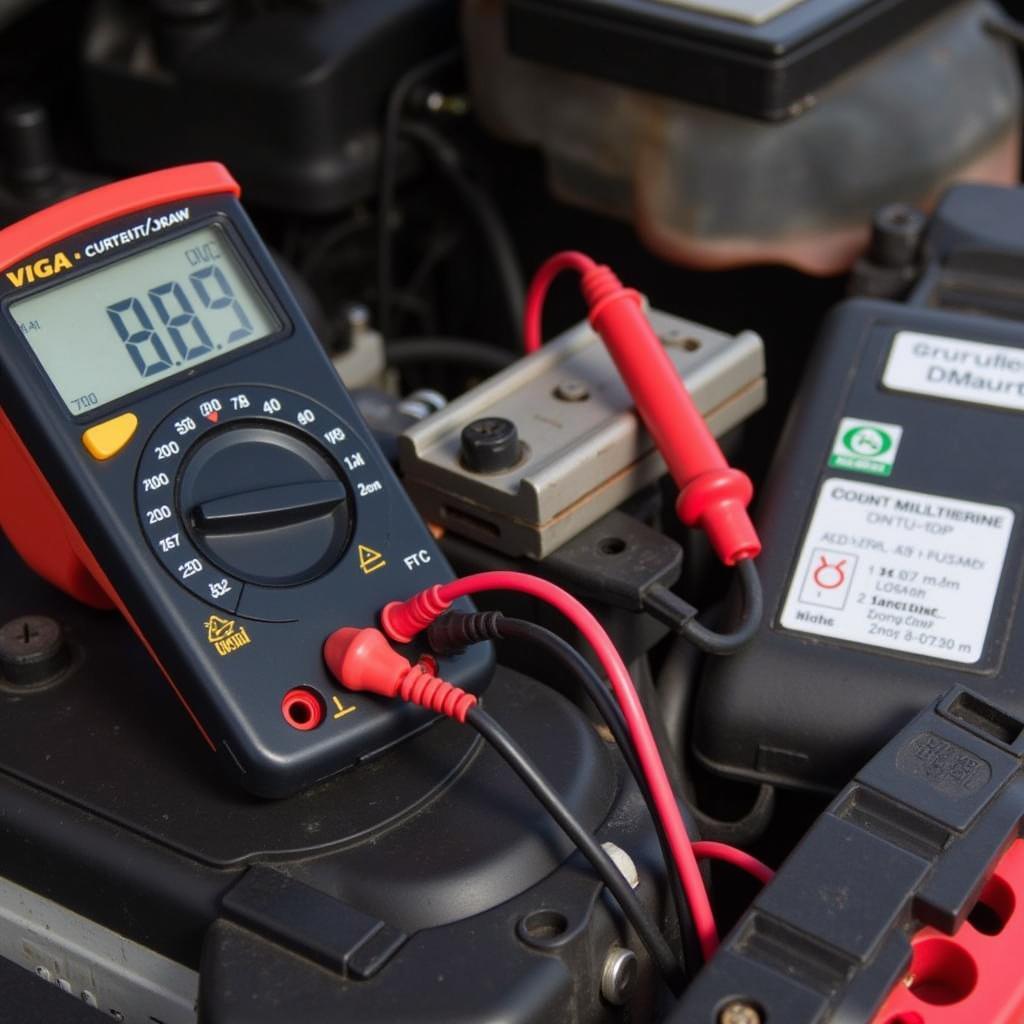Seeing a red brake warning light illuminate on your BMW’s dashboard can be unsettling. It signals a potential issue with your braking system that requires immediate attention. While a trip to a certified technician is recommended for a thorough diagnosis, understanding the common causes and knowing how to potentially reset the warning light can be incredibly helpful.
This comprehensive guide will delve into the intricacies of the BMW brake warning light, explore potential reasons for its activation, and provide a step-by-step guide on how to reset it.
Understanding Your BMW Brake Warning Light System
Your BMW is equipped with a sophisticated electronic system that constantly monitors the health of your braking system. When the system detects an anomaly, it triggers the brake warning light, a red circular icon with an exclamation mark within it, on your dashboard.
This warning light can indicate a range of issues, from something as simple as low brake fluid to more complex problems like a malfunctioning ABS (Anti-lock Braking System).
 BMW Brake Warning Light Dashboard
BMW Brake Warning Light Dashboard
Common Causes of a Red BMW Brake Warning Light
While a professional diagnosis is always recommended, understanding the usual suspects can offer valuable insights into the potential issue at hand. Here are some common culprits:
- Low Brake Fluid: This is the most frequent reason for the brake warning light to activate. Brake fluid is the lifeblood of your braking system, and a leak or depletion can significantly compromise braking performance.
- Worn Brake Pads: Brake pads have a finite lifespan. As they wear down, the brake pad sensor triggers the warning light, indicating the need for replacement.
- Faulty Brake Pad Sensor: The sensor itself might malfunction, triggering a false warning. This scenario, while less common, should be considered during diagnosis.
- ABS Issue: A problem within the ABS system, such as a faulty wheel speed sensor, can also trigger the brake warning light.
- Parking Brake Engaged: Sometimes, the red brake light simply indicates that the parking brake is engaged. This is easily resolved by disengaging the parking brake.
Resetting Your BMW Brake Warning Light: A Step-by-Step Guide
Disclaimer: The following steps are provided for informational purposes only. Attempting to reset the warning light without addressing the underlying issue can be dangerous. If the light persists after trying these steps, it’s crucial to consult a certified BMW technician immediately.
Before proceeding, ensure the vehicle is parked on a level surface, the engine is off, and the parking brake is engaged.
- Check Brake Fluid Level: Locate the brake fluid reservoir under the hood. The reservoir will have a “Min” and “Max” marking. If the fluid level is below the “Min” mark, carefully top it off with the recommended brake fluid type specified in your owner’s manual.
- Caution: Brake fluid is corrosive. Clean any spills immediately.
- Inspect Brake Pads: If the fluid level is adequate, visually inspect your brake pads through the wheel spokes. If the pads appear significantly worn down, they likely need replacing.
- Attempt a Reset: If the fluid level and brake pads seem fine, you can attempt a reset. This generally involves disconnecting the negative terminal of your car battery for a few minutes to clear the error code. However, be aware that this might reset other electronic settings in your car.
- Important: Disconnecting the battery should be done with caution. Refer to your owner’s manual for specific instructions.
- Test Drive: After reconnecting the battery, start your BMW and check if the warning light has turned off. If it has, take your car for a short, cautious test drive to ensure the brakes are functioning correctly.
Still Seeing Red? When to Call a Professional
If the brake warning light persists despite trying the reset or you’re unsure about performing the steps yourself, seeking professional help is crucial.
Here are instances when a visit to a certified technician is non-negotiable:
- Persistent Warning Light: If the light stays illuminated after checking the fluid level and attempting a reset, it indicates a deeper issue that requires professional diagnosis.
- Soft or Spongy Brake Pedal: This signifies a potential problem with the brake lines, calipers, or master cylinder, requiring immediate professional attention.
- Unusual Noises When Braking: Grinding, screeching, or clicking sounds during braking often indicate a serious problem with your braking system and should be addressed immediately by a professional.
Frequently Asked Questions (FAQs)
Can I drive my BMW with the brake warning light on?
It’s highly inadvisable to drive with the brake warning light illuminated. It signifies a potential issue with your braking system that could lead to brake failure, putting you and others at risk.
How much does it cost to fix a BMW brake warning light issue?
The cost varies greatly depending on the underlying cause. A simple brake fluid top-up might cost a few dollars, while a complete brake system overhaul can cost hundreds or even thousands of dollars.
Can I reset the BMW brake warning light myself?
While you can try the basic reset procedure outlined above, it’s crucial to understand the underlying cause first. Attempting to reset the light without addressing the root problem can be dangerous.
How often should I check my BMW’s brake fluid?
It’s recommended to check your brake fluid level at least once a month and top it off if needed.
What type of brake fluid does my BMW use?
The recommended brake fluid type for your specific BMW model is listed in your owner’s manual. Using the incorrect type can damage your braking system.
bmw x1 brake pad warning light reset
Conclusion
Addressing a BMW brake warning light promptly is crucial for maintaining your safety and the optimal performance of your vehicle. While understanding the potential causes and basic reset procedures can be helpful, remember that a professional diagnosis from a certified BMW technician is always the safest course of action to ensure your braking system’s integrity and your peace of mind.



